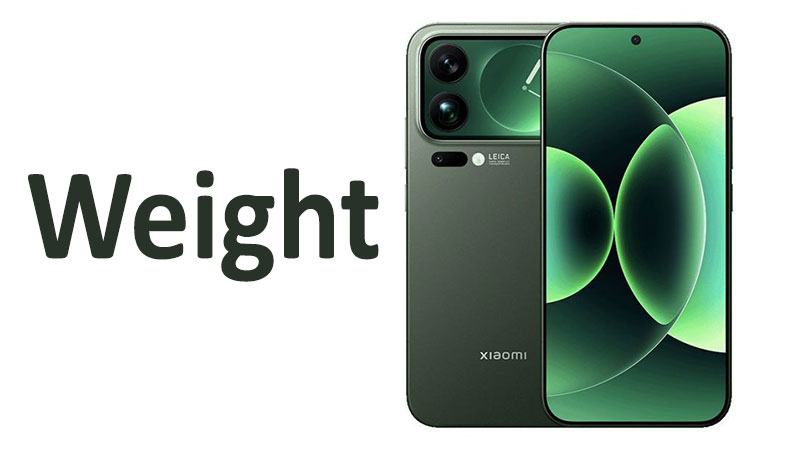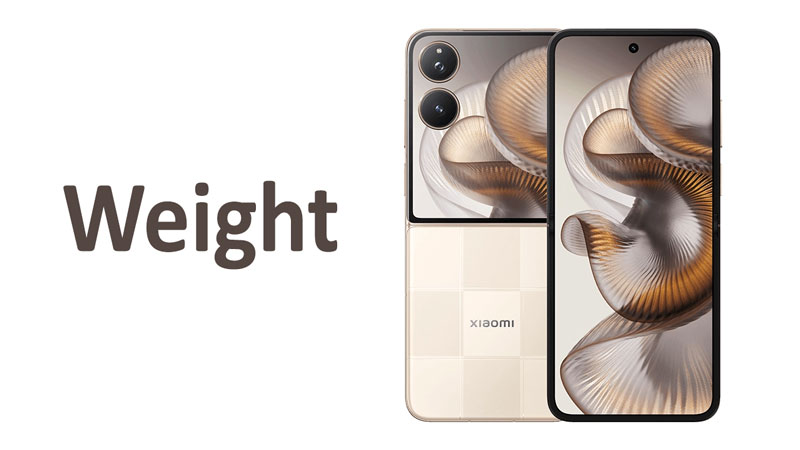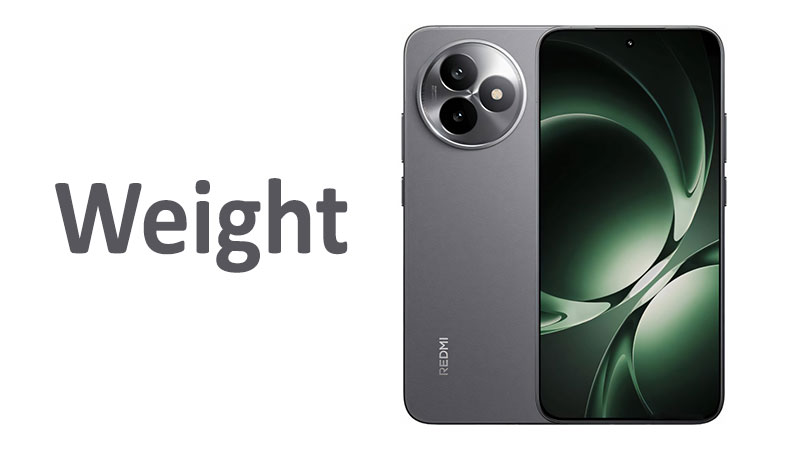The Xiaomi 17 Pro Max Weight and its exact mass are vital elements defining the user experience of this ultra-premium device. The phone’s mass, specified precisely as 219 g (7.72 oz), dictates daily portability and long-term user comfort. Weight is often a direct indicator of the internal components. It reveals the size of the battery, the type of frame materials, and the sophistication of the cooling system. For a device built around maximum performance and screen size, managing the physical mass is a major engineering challenge. This detailed analysis will thoroughly dissect the 219 g weight. We will explain how it impacts handling, why it is necessary, and how it compares to the competitive landscape. Understanding this weight is essential for any buyer focused on both performance and practical use.
Detailed Weight Metrics: 219 g Explained
The Xiaomi 17 Pro Max weighs exactly 219 g. This translates directly to 7.72 oz in imperial units. This specific figure is highly significant. It immediately places the Pro Max in the heavy end of the premium smartphone market. However, for a device that offers a massive 6.9 inch display and houses top-tier components, this weight is also a testament to efficient material use. The device’s mass reflects its overall dimensional commitment. The large 162.9 x 77.6 x 8.0 mm size naturally contributes to the higher overall weight. Consumers must realize this weight is a necessary consequence of the phone’s maximum feature set.
The Significance of 219 g in Daily Use
A weight of 219 g has a tangible impact on everyday scenarios. Holding the phone for extended periods, such as during long phone calls or extended reading sessions, will cause fatigue. Users will notice the weight. They will likely need to shift the phone between hands frequently. Carrying the phone in a loose pocket can also feel cumbersome. The sheer mass can pull on clothing. Therefore, dedicated users of the Pro Max often carry it in a bag or a secure jacket pocket. This weight is a constant reminder of the phone’s size and internal power.
Understanding the 7.72 oz Conversion
The imperial measurement of 7.72 oz is crucial for consumers in regions that use these units. This measurement helps contextualize the mass. For comparison, 7.72 oz is roughly equivalent to the weight of a standard baseball. It is a substantial weight for a handheld electronic device. This conversion is important for buyers. It helps them mentally prepare for the phone’s mass before purchasing. The weight is a functional requirement. It is not simply a matter of preference.
Weight Distribution and Balance
The perceived weight of a smartphone is not just about the number. It is also highly dependent on weight distribution. Xiaomi engineers work hard to balance the 219 g mass. This is achieved by centering the heaviest components, like the battery and main processor, optimally. Good balance makes the phone feel less top-heavy. It improves handling security. A well-balanced 219 g device can feel subjectively lighter than a poorly balanced 200 g device. The Pro Max achieves a good balance. This slightly mitigates the inherent heaviness.
Engineering the 219 g Mass
The 219 g weight is the sum of several high-density, essential internal components. This mass is a direct trade-off for maximizing features. The primary contributors are the battery, the thermal system, and the large display panel. Understanding these components explains why the phone cannot weigh less.
The Massive Battery Component
The largest single contributor to the 219 g mass is the high-capacity battery. The Pro Max requires a class-leading battery to power its 6.9 inch screen and powerful processor. Larger batteries use more lithium-ion material. More material means higher physical weight. Xiaomi prioritizes maximum battery life. This means accepting a higher physical weight. The weight is a non-negotiable cost of superior endurance. Buyers seeking all-day battery performance must accept this trade-off in grams.
Advanced Thermal Cooling System
The phone’s high-performance processor generates significant heat. The 219 g mass includes a sophisticated thermal cooling solution. This system often utilizes a large vapor chamber. Vapor chambers are usually made of copper. Copper is a dense, heavy material. The large 162.9 x 77.6 mm internal space allows for an oversized vapor chamber. This ensures optimal heat dissipation. This heavy component is essential for maintaining sustained peak performance during demanding tasks like gaming. The weight is directly proportional to cooling capability.
Material Choice and Frame Density
The frame material also significantly impacts the 219 g total. The Pro Max likely uses a high-grade aluminum alloy or stainless steel for the chassis. These materials offer superior durability and structural rigidity. They are heavy but necessary. Using lighter materials like titanium or certain plastics could reduce the weight. However, these lighter options might compromise the premium feel and structural strength. Xiaomi aims for both durability and a luxury feel. This necessitates a heavier, more substantial frame.
The 6.9 Inch Screen Density
The massive 6.9 inch display panel itself is heavier than smaller screens. This is due to the large area of glass and the multiple layers of the AMOLED panel structure. Furthermore, the glass protecting the display, often a specialized, durable type, adds considerable mass. The 92.3% screen-to-body ratio also means the phone is almost entirely glass and display material on the front. This maximization of screen area inherently increases the base weight of the device.
Ergonomic Impact: Handling and Portability
The 219 g mass has profound ergonomic implications. It changes how the phone feels during daily handling and transportation. Users must adapt their interaction style to this substantial mass.
Two-Handed Operation Reliance
The 219 g weight reinforces the need for two-handed operation. Trying to hold and navigate the 6.9 inch screen with one hand is tiring and risky. The weight makes the phone harder to grip securely. It also makes the phone much more likely to slip. Therefore, for tasks like typing or using system navigation, users naturally gravitate toward a two-handed grip. This is an expectation for an “ultra-large” flagship phone.
Pocketability and Clothing Strain
Carrying the 219 g device requires careful consideration of clothing. The weight can easily pull down the fabric of lighter trousers or shorts. It creates noticeable bulk and strain on pockets. Users often prefer a jacket pocket or a dedicated bag compartment for carrying the Pro Max. This heavy mass makes the phone less convenient for spontaneous carrying. Its presence is always noticeable. Buyers should acknowledge this portability limitation.
The Addition of Protective Cases
The 219 g mass is only the base weight. Most users add a protective case. Even a slim case can add 30 g to 40 g. A rugged, fully protective case can add up to 70 g. This addition can push the total weight close to 290 g (over 10 oz). This cased weight is exceptionally heavy for a handheld device. Buyers must factor in the weight of their chosen case when assessing the long-term comfort. The final weight can drastically alter the user experience.
Perceived Quality and Substantiality
The 219 g weight is not entirely negative. A heavy device often conveys a sense of premium quality and build substantiality. Lightweight phones can feel flimsy or cheap. The 219 g mass makes the Xiaomi 17 Pro Max feel dense and robust. It provides confidence in the device’s construction and durability. This physical presence contributes to the overall premium flagship experience. The weight assures the user of the high-quality materials used.
Competitive Weight Analysis
The 219 g weight must be viewed in context. Comparing it to its siblings and direct competitors reveals its aggressive positioning. This comparison clarifies Xiaomi’s design choices.
Pro Max vs. Xiaomi Siblings
The Xiaomi 17 and Xiaomi 17 Pro, being compact models, are significantly lighter. For example, if the compact Pro model weighs approximately 190 g, the Pro Max is about 29 g heavier. This 29 g difference is entirely attributable to the larger screen, the larger battery, and the overall bigger chassis. This difference perfectly illustrates the trade-off. Users gain a massive screen and longer battery life. They accept the 29 g penalty in return. This contrast helps buyers choose between portability and power.
Head-to-Head with Rival Large Flagships
The Xiaomi 17 Pro Max is competitive in its class. Many rival large flagship phones with similar screen sizes (6.8 to 6.9 inches) often fall into the 225 g to 240 g range. By maintaining a weight of 219 g, Xiaomi demonstrates good weight optimization. The 8.0 mm thickness helps keep the mass in check. The Pro Max is often slightly lighter than the absolute heaviest competitors. This positioning makes the 219 g mass respectable for an “Ultra” category device. It shows that Xiaomi maximized features while minimizing unnecessary bulk.
The Trend of Increasing Flagship Weight
Over recent years, flagship phone weights have consistently increased. This trend is driven by two main factors. First, consumers demand larger battery cells for better endurance. Second, advanced camera systems, especially periscope lenses, require more internal components and denser housing. The 219 g weight is simply following this industry trend. It reflects the increasing sophistication and power housed within modern mobile devices. The weight is a function of technological advancement.
The 219 g Trade-Off: Pros and Cons
A balanced assessment of the Xiaomi 17 Pro Max requires an explicit look at the inherent advantages and disadvantages of its 219 g mass.
Advantages of the 219 g Mass
- The weight indicates the presence of a substantial, high-capacity battery cell. This provides excellent all-day endurance.
- The mass confirms a sophisticated, oversized thermal management system is integrated. This ensures sustained peak performance.
- The 219 g provides a tangible, premium feel in the hand. It conveys durability and high-quality material use.
- The weight contributes to a feeling of greater stability during landscape use, such as intense gaming or video recording.
- It is a necessary feature that enables the massive 6.9 inch screen and professional-grade camera hardware.
Disadvantages of the 219 g Mass
- The high weight increases hand and wrist fatigue during prolonged periods of one-handed use.
- It makes the device significantly more difficult to carry comfortably in clothing pockets.
- The 219 g base mass makes the final weight, when cased, extremely heavy.
- It increases the risk of damage if accidentally dropped, due to the higher kinetic energy of the falling mass.
- The weight makes the phone slightly less spontaneous and convenient for quick, casual use.
Important Considerations for the Buyer
A buyer must be honest about their usage habits. If the user spends most of their time watching videos, editing photos, or gaming, the benefits of the 219 g mass outweigh the drawbacks. The screen size and battery life are necessary for these tasks. However, if the user primarily sends messages and makes quick calls, a lighter, more compact phone would be far more comfortable. The weight is not a flaw. It is a feature. It signifies maximum performance. The choice depends entirely on individual priorities.
Conclusion
The Xiaomi 17 Pro Max Weight, precisely 219 g (7.72 oz), is a critical component of its ultra-flagship identity. This substantial mass is a deliberate, necessary consequence of its design philosophy. The weight enables the phone’s greatest strengths. It houses the massive battery, the superior cooling apparatus, and the impressive 6.9 inch display. The 219 g figure confirms the Pro Max is an uncompromising device. It is built for power, longevity, and visual immersion.
Buyers must fully embrace the two-handed operation and reduced portability that come with the 219 g mass. In return, they receive a phone that feels incredibly premium, structurally rigid, and capable of sustained peak performance. The Xiaomi 17 Pro Max is the definitive choice for the power user who views weight as a necessary cost for maximum mobile capability. It is a handheld powerhouse, and its weight clearly communicates that fact.
Frequently Asked Questions (FAQ)
1. What is the exact weight of the Xiaomi 17 Pro Max in grams and ounces? The exact weight of the device is 219 g, which converts to 7.72 oz.
2. Why does the Xiaomi 17 Pro Max weigh 219 g? The weight is necessary to accommodate the massive battery cell, the large 6.9 inch screen, and the extensive internal thermal cooling systems.
3. Is the 219 g weight considered heavy for a modern phone? Yes, 219 g is heavy. It places the Pro Max in the ultra-large flagship category where high mass is common due to maximum component density.
4. How much weight does a typical case add to the phone? A standard protective case typically adds between 30 g and 40 g. This could bring the total cased weight to about 250 g or more.
5. Does the 219 g weight affect one-handed use? Yes, the substantial 219 g mass makes secure and comfortable one-handed use extremely difficult and often tiring for most users.



